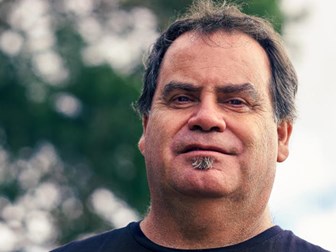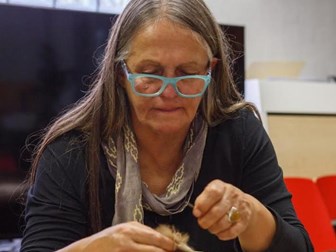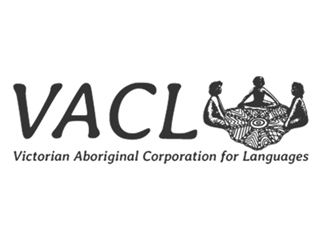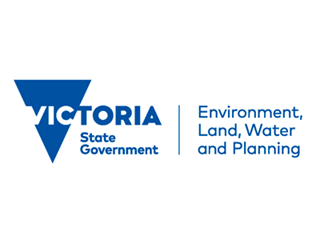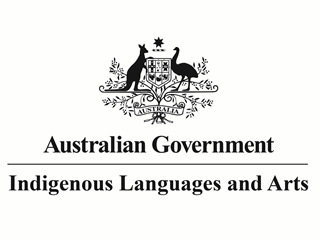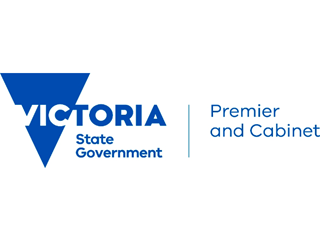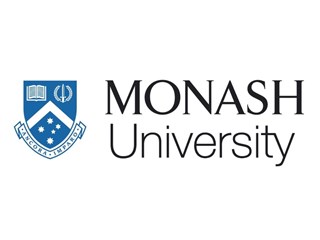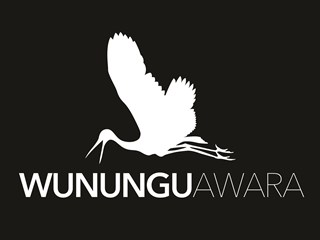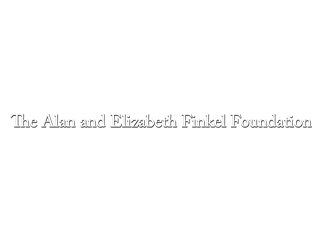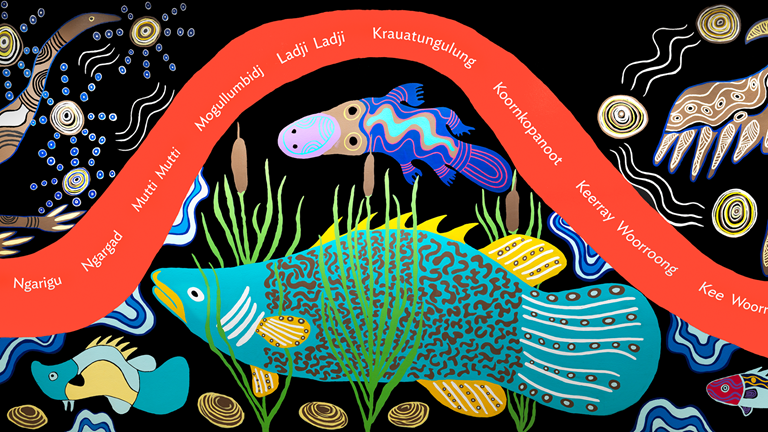
ngulu wurneet, galada-al wurrung-u, parniwaru tyalingi, waran woorroong-ee, barringgi dyaling | river of language
‘Language embodies all that we know, all that we do. It is the voice of the land.’ —Vicki Couzens, 2019
ngulu wurneet, galada-al wurrung-u, parniwaru tyalingi, waran woorroong-ee, barringgi dyaling | River of Language virtual tour brings to life the languages of south-eastern Australia through our voices, artwork and animations.
This powerful and vivid mixed media experience explores language as culture, knowledge, history and empowerment. We hope that you will develop a stronger connection and understanding of the diversity of languages and stories of the First Peoples of south-eastern Australia, as you explore the many video and audio clips embedded in the tour.
Click on the various coloured circles to play the clips. Help is always available at the bottom right side of your screen.
Exhibition background
The Victorian Aboriginal Corporation for Languages (VACL) developed the concept of an exhibition to mark the UNESCO’s International Year of Indigenous Languages and to celebrate their 25th anniversary (2019).
The result was the multimedia soundscape exhibition ngulu wurneet, galada-al wurrung-u, parniwaru tyalingi, waran woorroong-ee, barringgi dyaling | River of Language. The exhibition was on show in the Birrarung Gallery at Bunjilaka Aboriginal Cultural Centre, Melbourne Museum from June 2019 to October 2020.
The co-curators and artists, Vicki Couzens Keerray Wooroong and Brendan Kennedy Tati Tati Wadi Wadi Mutti Mutti created the exhibition in partnership with VACL and Museums Victoria.
Content
‘… as water is the lifeblood of Country, language is the lifeblood to our spirit …’ —Vicki Couzens, 2019
ngulu wurneet, galada-al wurrung-u, parniwaru tyalingi, waran woorroong-ee, barringgi dyaling | River of Language immerses you in Aboriginal Ways of Knowing, Being and Doing - to learn through listening and observing.
First Peoples cultures, lands and languages are inextricably linked and impossible to separate into individual entities. Language originates and belongs to Country and place. The mimicry of animals and nature in dance; the visual language of body art, motifs and symbols in stone etchings, sand paintings and ceremonial ornaments, music and sound creation all connected to place; embodying the interconnectedness of our existence and highlighting the enduring relationships of all things to our peoples.
Vicki Couzens and Brendan Kennedy ask visitors to spend time in this experience and ‘learn to see the world through our eyes, through our words, stories and images.’
Co-curators walkthrough
Approaching the virtual exhibition space, you will see a line of spears and shields. The 44 spears represent the 44 language groups of Victoria.
As you enter the space, you find an introductory section to your right that explains the history of VACL and talks about living language revitalisation.
Once you make your way through the spears, you approach the Wominjeka Space and the Welcome Rug—a space for people to gather, experience, listen and learn: to enter Country is to respect the Laws of the Land.
You then enter a vibrant, visual and aural experience of living language and a hand painted 28m mural.
Just as ‘the giant snake … goes underground and comes up and goes back underground all across the Country’, the Rainbow Serpent is painted across the whole length of the mural.
‘Below the snake is the water, so all our water and wetland ancestral animals, all our water ancestral beings. Then in the sky, is all of our ancestral animals in the night sky … So, what we see in the sky reflects what we see on the ground. And throughout the snake is all 44 languages in Victoria written in text.’ — Brendan Kennedy, 2019
‘This mural is an expression of how rich our language is... Language is vibrant, bold, living and diverse, like our cultural landscape. Our language connects us to our world like the animals in the mural are connected to each other.
Come in, listen and learn about our culture; and allow yourself to be immersed in the river of language’ — Brendan Kennedy, 2019
About the artists
Brendan Kennedy
Descendant of the Murray River & Murrumbidgee River Traditional Nations Tati Tati Latji Latji Weki Weki Wadi Wadi Mutti Mutti Yitha Yitha Nari Nari (No No Tribes).
Brendan has been reviving his languages for over 15 Years and has produced Language books, animations, digital apps, language resources and language and art exhibitions, he has taught language in schools and early childhood centres in Robinvale.
He continues to share and create language learning opportunities for his North Western Victorian Aboriginal Communities.
Dr Vicki Couzens
Dr Vicki Couzens is a Gunditjmara woman from the Western Districts of Victoria. Vicki acknowledges her Ancestors and Elders who guide her work.
She has worked in Aboriginal community affairs for 40 years Vicki’s contributions in the reclamation, regeneration and revitalisation of cultural knowledge and practice extend across the ‘arts and creative cultural expression’ spectrum including language revitalisation, ceremony, community arts, public art, visual and performing arts, and writing.
She is Senior Knowledge Custodian for Possum Skin Cloak Story and Language Reclamation and Revival in her Keerray Woorroong Mother Tongue.
Vicki is employed at RMIT as a Vice Chancellors Indigenous Research Fellow developing her Project ‘watnanda koong meerreeng , tyama-ngan malayeetoo (together body and country, we know long time)’ (The key objective of this Project is to produce model/s, pathways and resources for continuing the reinvigoration of Aboriginal Ways of Knowing Being and Doing with a special focus on language revitalisation. The Project investigates and examines how revitalisation of cultural knowledges and practices affect healing in Aboriginal individuals, families and communities and builds resilience and capability towards sovereign nation building aspirations, opportunities and a realised living legacy.)
Vicki is rebuilding the Gunditjmara Grammar to facilitate a new phase of language learning through immersive experiences and home based, self-directed family clan learning. She is currently writing plain language resources for this community learning.

